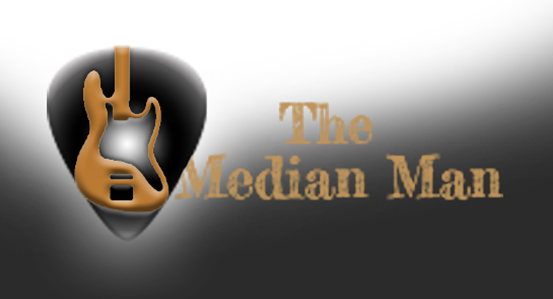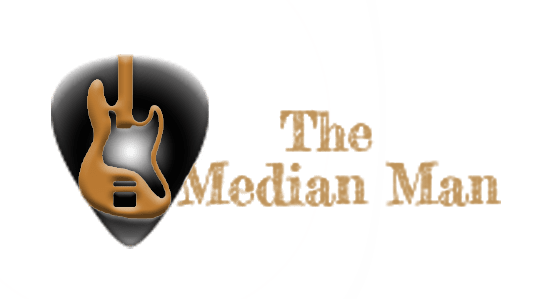
Earlier this week The Median Man spoke with Katya Richardson

Earlier this week The Median Man spoke with Katya Richardson
REAL NAME
What inspired the name of the band and what are your influences?
I use my real name, Katya Richardson, as my artist name. Although originally trained as a composer, my background spans a variety of other mediums, like jazz, synth pop, and scoring for dance and film. Musically, I’m drawn to combining elements of all these influences and making art that is collaborative. I’m fascinated in blurring the line between acoustic and electronic music, and juxtaposing modern sounds with traditional styles!
Classically, I’m influenced by minimalist composers like John Adams and Phillip Glass, and the electronic aspects of my music are largely inspired by the jazz fusion in Flying Lotus’ work and the tactile, synthesized sound design of SOPHIE. In terms of hybrid artists, I really look up to the work of Isobel Waller-Bridge – I love how her recent score to Vita and Virginia (2018) showcases grungy electronics and traditional strings to both romanticize and modernize the 1920s. Artistically, I aspire to not limit myself to one perspective.
How do you approach songwriting? Are there any themes that you are keen to explore when you start off?
I’m very tactile when it comes to writing, so I usually start improvising at a piano, playing with various sounds in my studio, or recording layers of vocals and seeing what sticks. Sometimes my music is influenced directly by what I’ve been listening to. But I generally approach each project – whether it be a film score or a song – as its own entity, so the process is a little different each time. I would say that most of my music is naturally cinematic and emotive, and I like focusing on certain elements for each piece. I’m super into minimalist textures and vocal loops, and sometimes a whole piece is about exploring that. Other times, my jazz piano background kicks in and I find myself prioritizing melody and harmony.
In my most recent electrojazz release, Left From Write, the musical process was especially driven by the narrative. It was a dance collaboration with a choreographer, aiming to sonically reinterpret the thought processes, creativity, and alienation of a dyslexic. For me that meant creating an entirely new language for the piece, and completely disregarding traditional musical phrasing. I looked at it in terms of sound design, production, and experimenting with the stereo space as if it were someone’s inner monologue – playing with moments of musical saturation and focus. I’ve never interacted with something so thematically before!
TACTILE
TACTILE
How do you approach songwriting? Are there any themes that you are keen to explore when you start off?
I’m very tactile when it comes to writing, so I usually start improvising at a piano, playing with various sounds in my studio, or recording layers of vocals and seeing what sticks. Sometimes my music is influenced directly by what I’ve been listening to. But I generally approach each project – whether it be a film score or a song – as its own entity, so the process is a little different each time. I would say that most of my music is naturally cinematic and emotive, and I like focusing on certain elements for each piece. I’m super into minimalist textures and vocal loops, and sometimes a whole piece is about exploring that. Other times, my jazz piano background kicks in and I find myself prioritizing melody and harmony.
In my most recent electrojazz release, Left From Write, the musical process was especially driven by the narrative. It was a dance collaboration with a choreographer, aiming to sonically reinterpret the thought processes, creativity, and alienation of a dyslexic. For me that meant creating an entirely new language for the piece, and completely disregarding traditional musical phrasing. I looked at it in terms of sound design, production, and experimenting with the stereo space as if it were someone’s inner monologue – playing with moments of musical saturation and focus. I’ve never interacted with something so thematically before!
ULTIMATE GOAL
Why do you write the sort of music that you do?
I often find that the most thought-provoking and timeless art is the kind that is memorable, questioning, and demands a reaction of some kind. I am most interested in creating something that no one has ever heard before, while staying true to myself throughout the process. At this stage in my life, I am still experimenting with my sound and finding my unique artistic message. However, one can easily spend a life in music constantly perfecting and never being fully satisfied. My ultimate goal is to inspire and move people, encourage more women in music, and provide accessible art that reaches a wide range of listeners.
How do you decide what songs to perform live?
I haven’t performed any songs live yet! Most of my music is instrumental and either notated, recorded, or produced. I used to perform as a piano soloist and with jazz bands when I was younger, but I’d like to revive that. I recently started implementing vocals into my music, so it’d be super cool to do a live vocal and synth set soon.
REVIVE
REVIVE
How do you decide what songs to perform live?
I haven’t performed any songs live yet! Most of my music is instrumental and either notated, recorded, or produced. I used to perform as a piano soloist and with jazz bands when I was younger, but I’d like to revive that. I recently started implementing vocals into my music, so it’d be super cool to do a live vocal and synth set soon.
WHAT WORKS
EXPERIMENTAL DANCE
What plans do you have for the future?
I just finished scoring an experimental dance film about plastic pollution in our oceans, and I’m very excited to share that soon. I have a few other film and dance collaborations lined up, but my priority for the next year is to start working on a classical album and apply to Master’s programs!

